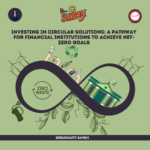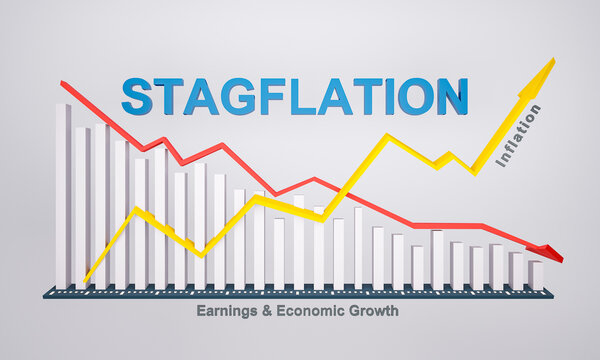
BACKDROP
The Circle of Life is consistently restored. The seasons shift. The sun rises and sets. Nature rejuvenates. The body recovers. The rims of the economy also rise after each downturn. Greater consumption is a result of having more disposable income. Private consumption growth is a factor in rising revenues and profits. More profitable businesses generate better tax revenues. Greater social welfare is made possible by fuller treasuries. This was explicitly acknowledged in the Budget, which also began the beneficial investment cycle, with its focus on heavy investment in technology and innovation in the primary sector of the country. The macropolitical environment in which the budget for 2023–24 was presented was difficult. Contrary to the previous two years, the increase in revenues brought on by high nominal GDP growth is unlikely to be duplicated; in addition, India’s real growth is projected to drop due to dark clouds brought on by a global downturn of recession & finally, general elections in 2024 means political compulsions. Even though India’s service sector accounts for the most amount of contribution in the GDP today, more than 70% of the rural households in India still depend on Agriculture as their primary source of income & livelihood. In the last six years, India’s agriculture sector has expanded at an average annual rate of 4.6%, in part due to favourable monsoon conditions. But in India, farming is still among the riskiest occupations. A farmer frequently prepares for subpar returns and middlemen. The budget for 2023–24 has a strong emphasis on long-term sustainable growth, which makes it encouraging for the farming community and the entire agriculture sector. This year’s budget makes a sincere effort to encourage innovation & technology in the sector to make it future ready. However, there are also concerns that wider allocations to farmers are being reduced by announcing new funds.
NEW MEASURES & THEIR EXPECTED EFFECTS
HITS:
- To support farmer-centric solutions, the digital public infrastructure for agriculture will be developed as an open-source public good. Farmers will benefit from better crop planning and easier access to credit and insurance services thanks to the proposed digital Agri-stack. The development of Agri-tech firms will also be assisted by the digital infrastructure.
- A fund to assist young entrepreneurs from rural areas in starting up agriculture businesses was also mentioned in the budget. “The fund will aim at bringing innovative and affordable solutions for challenges faced by farmers. It will also bring in modern technologies to transform agricultural practices, increase productivity and profitability,” the finance minister said in her speech.
- The accelerator fund will support budding entrepreneurs while providing creative and cost-effective solutions to issues facing farmers, particularly with regard to increasing profitability and gaining access to contemporary technology.
- For PM Kisan, which gives all farmers a yearly cash transfer of 6,000 in three instalments, the budget allotted 60,000 crore rupees.
- With funding of $2,200 crore, the budget committed to establishing the Atmanirbhar Clean Plant Program to increase the availability of high-value horticulture crops with disease-free, high-quality planting material.
- The Prime Minister’s Programme for Restoration, Awareness, Nourishment and Amelioration of Mother Earth (PM-PRANAM), a new initiative to encourage governments to promote alternative fertilisers and balanced usage of chemical fertilisers, was also announced in the budget. The Centre budgeted 1.31 trillion rupees for urea subsidies and an additional 44,000 crore for phosphatic and potassic fertilisers in 2023–24, which is a major decrease from last year when worldwide nutrient prices skyrocketed as a result of the conflict in Ukraine.
- The budget committed to supporting the Indian Institute of Millet Research in Hyderabad as a Centre of Excellence for exchanging best practises, research, and technology in an effort to establish India as a global centre for millets on an international scale. At least ten varieties of millets, which are more nutrient-dense than rice or wheat and climate-smart crops using less water and fertiliser, are grown in India, which is currently the world’s largest millet producer.
- The budget also upped the aim for disbursing agricultural credit from 18 trillion to 20 trillion from last year. Additionally, it pledged to create additional cooperatives in the dairy and fishery industries as well as decentralised storage facilities for farmers.
- A new sub-plan of the Prime Minister’s Matsya Sampada Yojana was also announced, with an investment of 6,000 crore, to help fishermen, seafood merchants, and microbusinesses increase the efficiency of their value chains and assist market growth.
- The budget targeted 10,000 bio-input resource centres to encourage ten million farmers to abandon chemical farming in order to promote greater use of natural farming practises. It also disclosed strategies for setting up a network of pesticide and micro-fertilizer producers throughout India.
- Expansion of Pradhan Mantri Fasal Bima Yojana (PMFBY): The PMFBY provides insurance coverage to farmers against crop losses due to natural calamities. The budget has announced an expansion of this scheme to cover all districts in the country.
- Development of Farmer Producers Organizations (FPOs): The government plans to set up 10,000 FPOs to help farmers achieve better prices for their produce.
- Implementation of e-NAM: The e-National Agricultural Market is an online platform for trading of agricultural products. The government has announced plans to integrate 585 agricultural markets with e-NAM to improve transparency and efficiency in the agricultural sector.
- Fertilizer subsidies would rise from Rs 105,222 crore in FY23 to Rs 2,25,000 crore, according to the budget. Companies like Gujarat Narmada Valley Fertilizers & Chemicals Limited, Rashtriya Chemical and Fertilizers, National Fertilizers, Madras Fertilizers, Chambal Fertilizers, and Deepak Fertilizers are anticipated to gain from this action.
- It is predicted that the budget recommendations may have some advantage for the tobacco firm, ITC. Chart patterns and reports suggest that ITC’s shares have performed well in the current market, which is another reason why the performance of its shares appears to be positive.
MISSES:
- The government had set an ambitious goal of doubling farmers’ income by 2022. There was no update on that promise. The Market Intervention Scheme and Price Assistance (MIS-PSS) and Pradhan Mantri Annadata Aay Sanrakshan Yojna (PM-AASHA), two significant programmes that guarantee the minimal support for price-based procurement activities in the nation, however, suffered a sharp reduction. Due to a nearly 100% reduction in funding—from Rs 1,500 crore to Rs 1 lakh—MIS-PSS was essentially neglected. Additionally, the PM-AASHA scheme had its budget cut from Rs 1 crore to Rs 1 lakh. The funding allotted for the Pradhan Mantri Kisan Samman Nidhi (PM-KISAN), a programme that offers economic incentives to landowner farmers, remained constant at Rs 60,000 crore.
- The department of agriculture and farmer’s welfare’s overall budget was reduced from 1.24 trillion in 2022–2023 to 1.15 trillion in 2023–2024. From 1.38 trillion in 2022–2023 to 1.31 trillion in 2023–2024, the entire budgetary allocation for agriculture, comprising the departments of research, animal husbandry, and fisheries, was reduced from ₹1.38 trillion in 2022-23 to ₹1.31 trillion in 2023-24. However, the budget for the fisheries sector was raised marginally from ₹2,118 crore (2022-23) to ₹2,248 crore, while the livestock budget was raised from ₹3,919 crore to ₹ 4,318 crore. The budget for agriculture research was raised from ₹8,514 crore in 2022-23 to ₹9,504 crore in 2023-24.
- Addressing the issue of low agricultural productivity: Despite the allocation of funds for infrastructure development, the budget did not address the root cause of low agricultural productivity, such as the lack of access to modern technology and low investment in research and development.
- Addressing the problem of low farmer income: While the budget has increased the allocation for agriculture credit, it did not address the broader issue of low farmer income, which is due to factors such as the lack of fair prices for their produce, high input costs, and the lack of access to market information.
- Lack of focus on sustainable agriculture: The budget did not provide any significant allocation for the promotion of sustainable agriculture practices, such as organic farming and water conservation, which are crucial for long-term food security and environmental protection.
- Lack of support for small and marginal farmers: The budget did not address the specific needs of small and marginal farmers, who often struggle to access credit and markets and are most vulnerable to the effects of climate change.
While the initiatives announced in the budget are expected to improve the agricultural sector in India, the above-mentioned issues, if left unaddressed, could limit the long-term impact of these initiatives. Overall, there were some hits & some misses in the budget pertaining to the agriculture sector. Nonetheless, despite the decrease in the amount of allocation to the sector, the areas of focus can be a game changer with the right kind of execution.
-Editor
Simran Soni





























Leave a comment